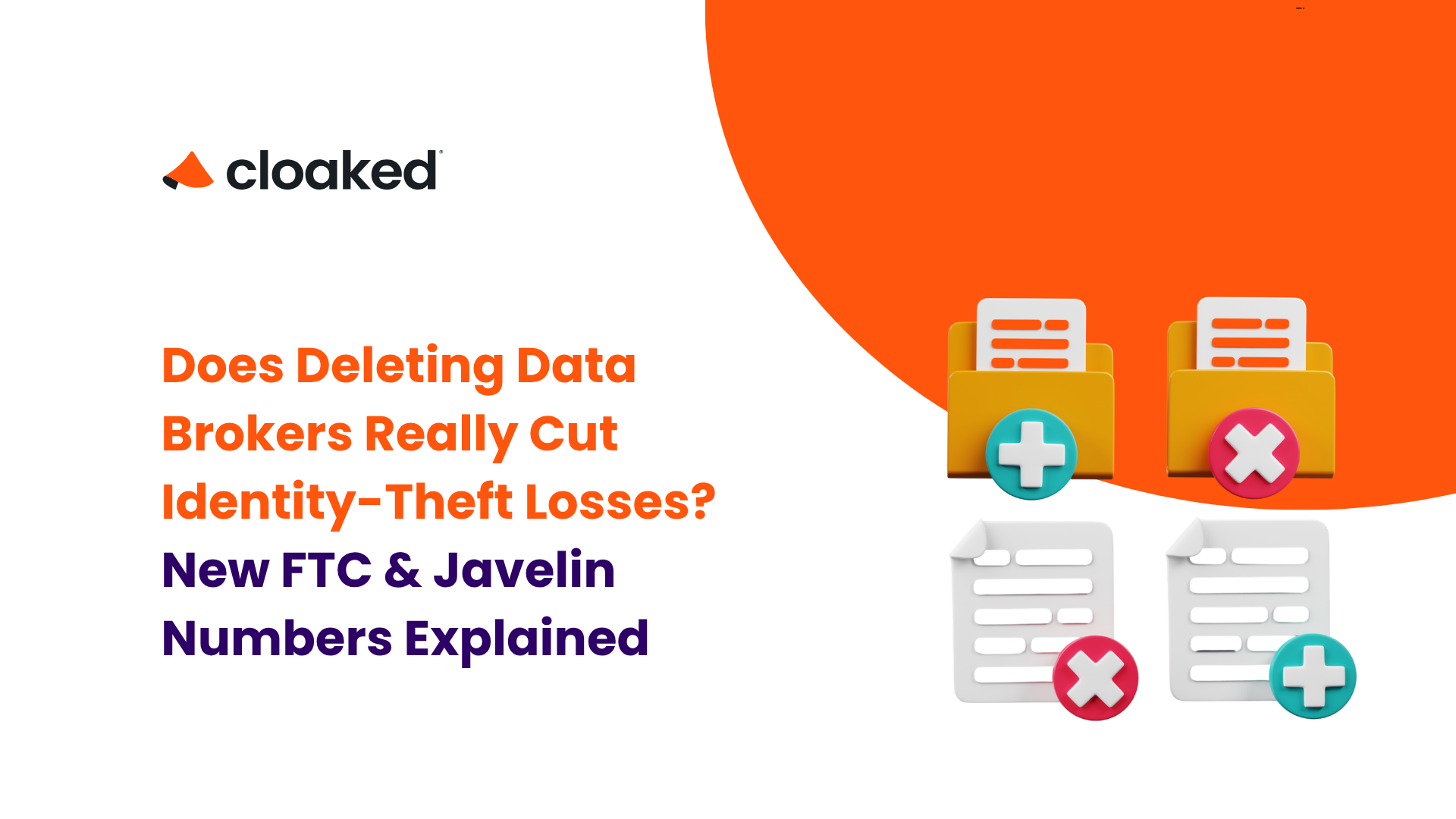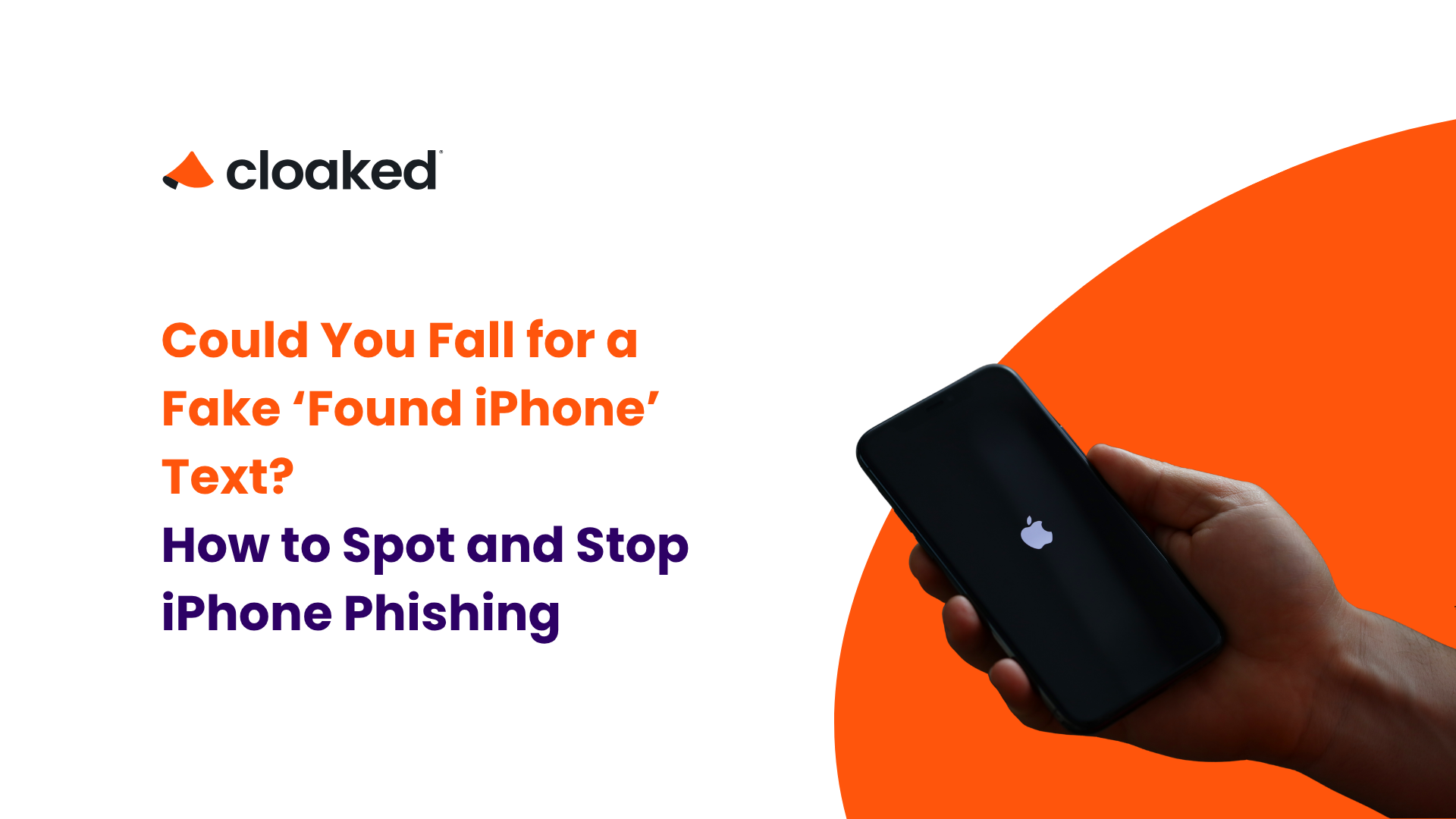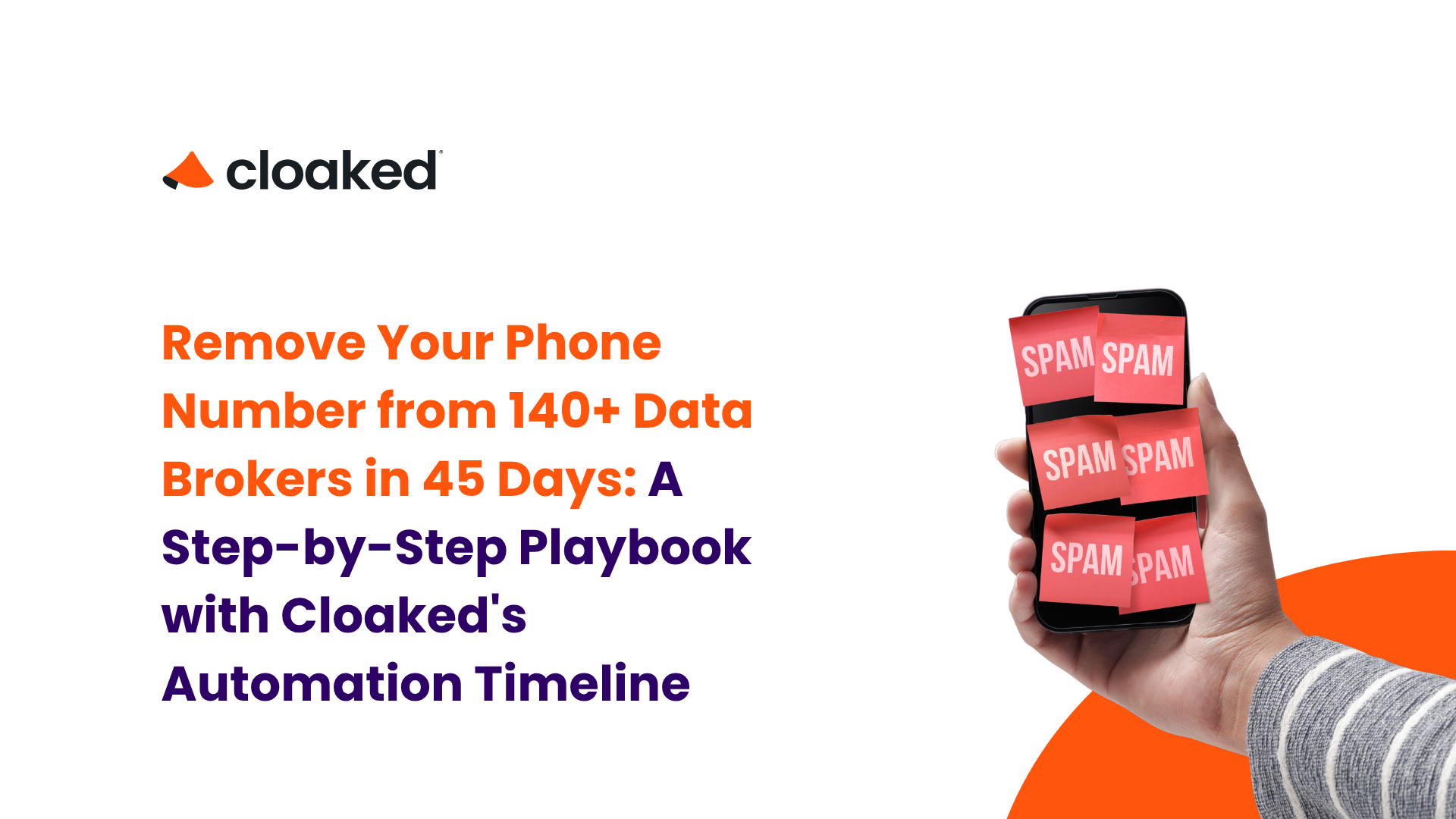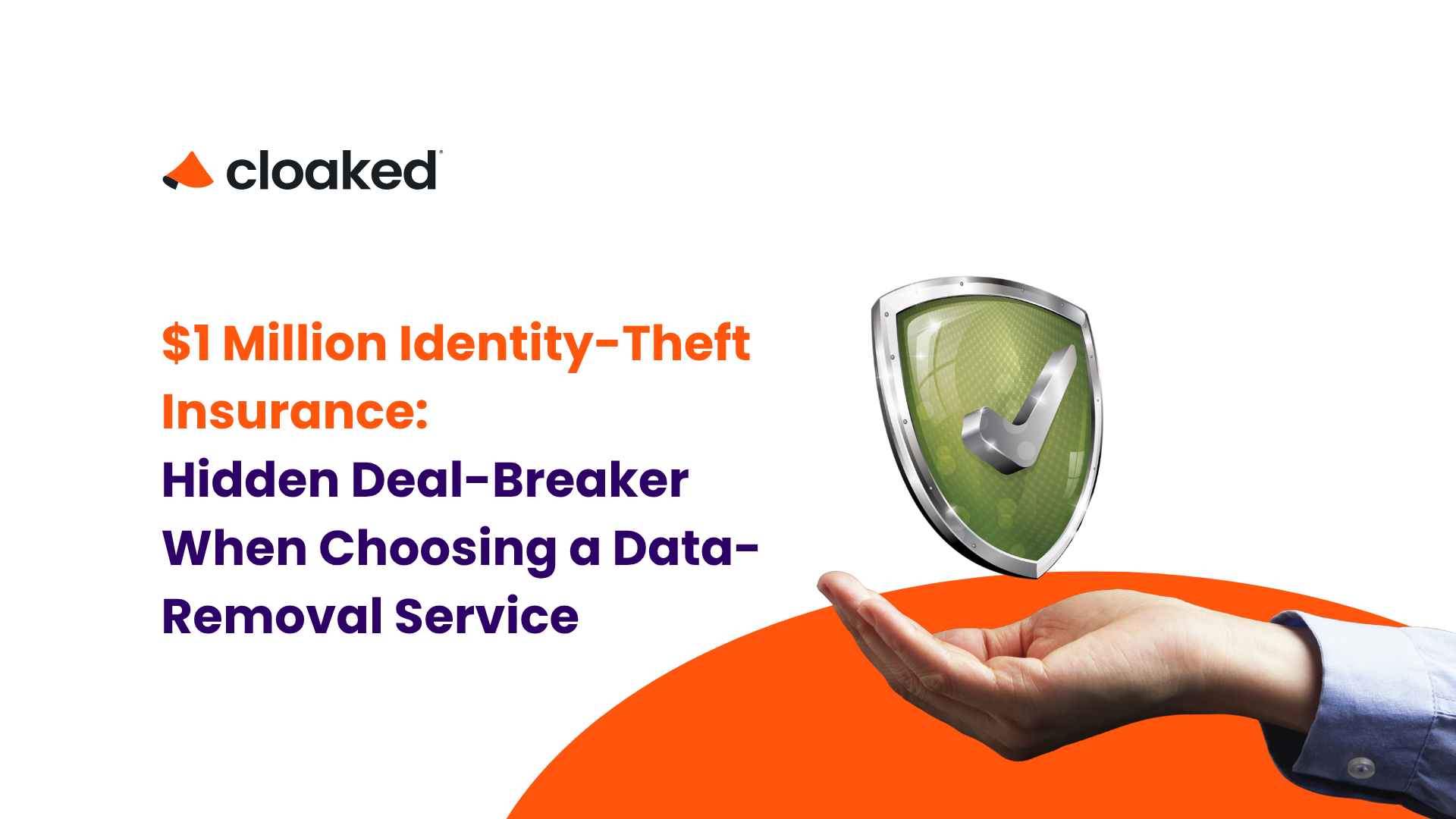Identity fraud ballooned to $47 billion in 2024, but advocates say data broker removal can stem the tide. This post dissects the newest numbers and shows how data broker removal works—and when it doesn't.
2024–2025 Identity-Fraud Losses at a Glance
The scale of identity theft has reached unprecedented levels in recent years. According to Javelin Strategy's latest report, American adults lost $47 billion to identity fraud and scams in 2024, an increase of $4 billion over 2023. The Federal Trade Commission's March 2025 data paints an equally sobering picture, showing consumers reported losses exceeding $12.5 billion in 2024, marking a 25% increase from the previous year.
What's particularly alarming is the shift in victim impact rates. The FTC found that 38% of fraud reports in 2024 involved financial loss, a significant jump from 27% in 2023. This means not only are more people being targeted, but a higher percentage are actually losing money to these schemes.
The data broker industry itself continues to expand at a staggering pace. Market valuations reached $257.2 billion in 2023 and are projected to hit $441.4 billion by 2032. This explosive growth creates an ever-expanding attack surface for identity thieves, as more personal information becomes available for exploitation through these commercial databases.
How Data Broker Leaks Supercharge Imposter Scams
The connection between exposed personal data and financial fraud has never been clearer. Imposter scams alone accounted for approximately $2.95 billion in losses in 2024, making them one of the most devastating forms of identity fraud. These scams thrive on the availability of personal information that criminals can use to build convincing personas.
Consumers lost a total of $27.2 billion in 2024, representing a 19% increase from the prior year. The sophistication of these attacks has evolved dramatically, with fraudsters increasingly using text messages as their preferred method of contact. In fact, 54 percent of survey respondents who experienced identity fraud in 2024 were first contacted by text, up from 49 percent in 2023.
The time it takes to resolve these incidents has also skyrocketed. Victims now spend nearly 10 hours on average resolving issues stemming from identity fraud, compared to just 6 hours in 2022. This increased burden extends beyond time, with average out-of-pocket expenses for victims increasing 70% in 2023 to $202.
As Christopher Mufarrige, Director of the FTC's Bureau of Consumer Protection, stated: "The data we're releasing today shows that scammers' tactics are constantly evolving." This evolution is directly tied to the vast amounts of personal information available through data brokers, creating what security experts call exploitable gaps in consumer protection.
Non-Compliance Is the Norm: What the UC Irvine CCPA Audit Reveals
A groundbreaking study from UC Irvine has exposed the widespread failure of data brokers to comply with privacy regulations. The research found that 43% of companies never responded to data access requests, representing a clear violation of CCPA requirements. Even among those who did respond, only 52% responded within the mandated 45-day timeframe.
The financial stakes for non-compliance have increased dramatically. The annual registration fee for data brokers jumped from $400 to $6,600 in 2025, signaling regulators' intent to enforce compliance more aggressively. Yet despite these penalties, the research reveals that 71.7% of data brokers covered by removal services are not government-registered, demonstrating a fundamental lack of regulation in the industry.
Perhaps most concerning is what researchers call the "privacy paradox." When consumers attempt to exercise their privacy rights, data brokers often require additional personal information for verification that they hadn't previously collected. This creates new vulnerabilities, as 95% of brokers requested email addresses and names during the verification process, potentially exposing consumers to additional risks.
Estimating Loss Reduction From Timely Data Removal
The potential for reducing fraud through data removal is significant but not absolute. Recent studies show that automated removal can eliminate an average of 48.2% of identified records per user. While this may seem modest, in the context of identity theft where victims report average costs of $3,313 per incident, even partial reduction in exposure can translate to substantial savings.
Apple's implementation of App Tracking Transparency provides compelling evidence of how limiting data collection reduces fraud. Research shows that ATT substantially reduced fraud complaints in areas with higher iOS user shares. This real-world experiment demonstrates that restricting data availability directly correlates with decreased fraud incidents.
The attack window timing matters enormously. In 2024, the percentage of people reporting financial losses from fraud jumped to 38%, up from 27% the previous year. By removing personal information from broker databases, consumers can significantly reduce the time window during which their data remains exposed to potential fraudsters.
Consider that Account Takeover represents 53% of identity fraud cases. When personal information is removed from broker databases promptly, criminals lose access to the detailed profiles they need to successfully impersonate victims and take over accounts.
Proactive vs. Reactive: Cost of Removal Plus $1 Million Insurance
The economics of prevention versus remediation strongly favor proactive protection. Cloaked provides up to $1 million in comprehensive Identity Theft Protection, covering users against the potentially devastating financial impacts of identity fraud. This coverage has become the standard among reputable providers, recognizing that even the best removal efforts cannot guarantee complete protection.
When comparing costs, victims face average out-of-pocket expenses of $3,313 per identity theft incident, according to recent surveys. Meanwhile, comprehensive protection services with insurance can cost less than $10 per month. The average victim spends $3,313 dealing with identity theft aftermath, not including the nearly 10 hours of time required for resolution.
The combination of active removal and insurance creates a dual-layer defense. While removal services work to minimize exposure by eliminating records from broker databases, the insurance component provides financial protection if criminals still manage to exploit any remaining data. This approach acknowledges both the limitations of removal services and the reality that complete data elimination is nearly impossible in today's digital ecosystem.
Not All Data-Removal Services Are Equal: 2025 Benchmarks
The data removal service landscape varies dramatically in effectiveness and coverage. Leading services like Incogni cover 420+ brokers, while others focus on smaller, more targeted lists. Independent testing reveals significant performance differences, with Optery achieving 68% removal rates compared to DeleteMe's 27% in recent studies.
Beyond raw numbers, the quality of removal matters. DeleteMe claims coverage of 850 data brokers, but 569 require custom removal requests, bringing practical coverage down to just 181 brokers. This distinction between theoretical and actual coverage significantly impacts real-world effectiveness.
Cloaked distinguishes itself through a comprehensive approach that goes beyond simple removal. The service removes personal information from over 120 data brokers while also providing tools to prevent future data collection. This includes generating secure aliases and encrypted communications that mask genuine personal data from the start.
The research also reveals that only 41.1% of records identified by removal services actually contain accurate PII about the intended user. This highlights the importance of choosing services with sophisticated matching algorithms and verification processes to ensure legitimate records are removed while avoiding collateral damage to unrelated individuals.
Key Takeaways: De-Risking Your Identity in 2025
The evidence is clear: data broker removal can meaningfully reduce identity theft risk when implemented as part of a comprehensive privacy strategy. With fraud losses reaching $47 billion and the average victim spending over $3,000 and 10 hours resolving incidents, the case for proactive protection has never been stronger.
Cloaked offers a free risk assessment scan to help you understand your current exposure level. This assessment reveals which brokers have your information and determines your risk profile, providing a starting point for taking control of your digital privacy.
The combination of automated removal from 120+ brokers, $1 million in identity theft insurance, and proactive privacy tools creates multiple layers of protection. As one Cloaked user noted, "I've noticed a serious down shift in robocalls" after using the service, demonstrating the immediate, tangible benefits of comprehensive data removal.
Data brokers provide your personal information to identity thieves, creating direct pathways for fraud. By removing this information and maintaining ongoing monitoring, you can significantly reduce your attack surface. In an era where data breaches and fraud attempts are inevitable, the question isn't whether to protect your identity, but how comprehensively you choose to do so.
The path forward is clear: proactive data removal combined with insurance coverage offers the most cost-effective protection against identity theft. With Cloaked's comprehensive suite of privacy tools and $1 million insurance coverage, you can take control of your digital footprint before criminals do.
Cloaked Data Broker & Identity Theft Protection FAQs 2025
Frequently Asked Questions
Yes—data removal meaningfully lowers exposure, though it’s not absolute. Automated removal can eliminate about 48.2% of identified records per user, shrinking the dataset scammers use for imposter scams and takeovers. With 38% of FTC fraud reports involving financial loss in 2024 (up from 27%), reducing exposure helps cut both odds and cost of becoming a loss case.
Timing is crucial. The faster you remove exposed data, the narrower your attack window. Account takeovers drive ~53% of identity fraud; early removal deprives criminals of the detailed personal data they need to impersonate you. The jump from 27% to 38% loss incidence highlights why delays increase financial risk.
The 2025 UC Irvine audit revealed that 43% of brokers never responded to data-access requests, and only 52% met the 45-day compliance deadline. Alarmingly, 95% asked for extra PII (like names and emails) for verification—creating a “privacy paradox” where asserting your rights can expose more data. Using vetted services helps minimize how much personal information you share.
Cloaked removes your information from 120+ brokers and includes up to $1 million in Identity Theft Protection coverage for eligible expenses if fraud occurs. This dual-layer defense combines prevention and remediation—often for under $10/month—making it far more cost-effective than post-breach recovery.
Independent tests found Optery removes ~68% of listings, compared to ~27% for DeleteMe, while Incogni targets over 420 brokers.
Cloaked pairs strong removal coverage (120+ brokers) with proactive privacy tools like aliases and masked communications, preventing new data collection instead of only cleaning up old exposure.
Victims spend an average of $3,313 and 10 hours recovering from identity theft. Reducing exposure lowers incident frequency and loss severity. Even partial reductions can yield meaningful ROI, similar to how Apple’s App Tracking Transparency correlated with fewer fraud reports. Users also see immediate quality-of-life gains like fewer spam calls after data removal.


















